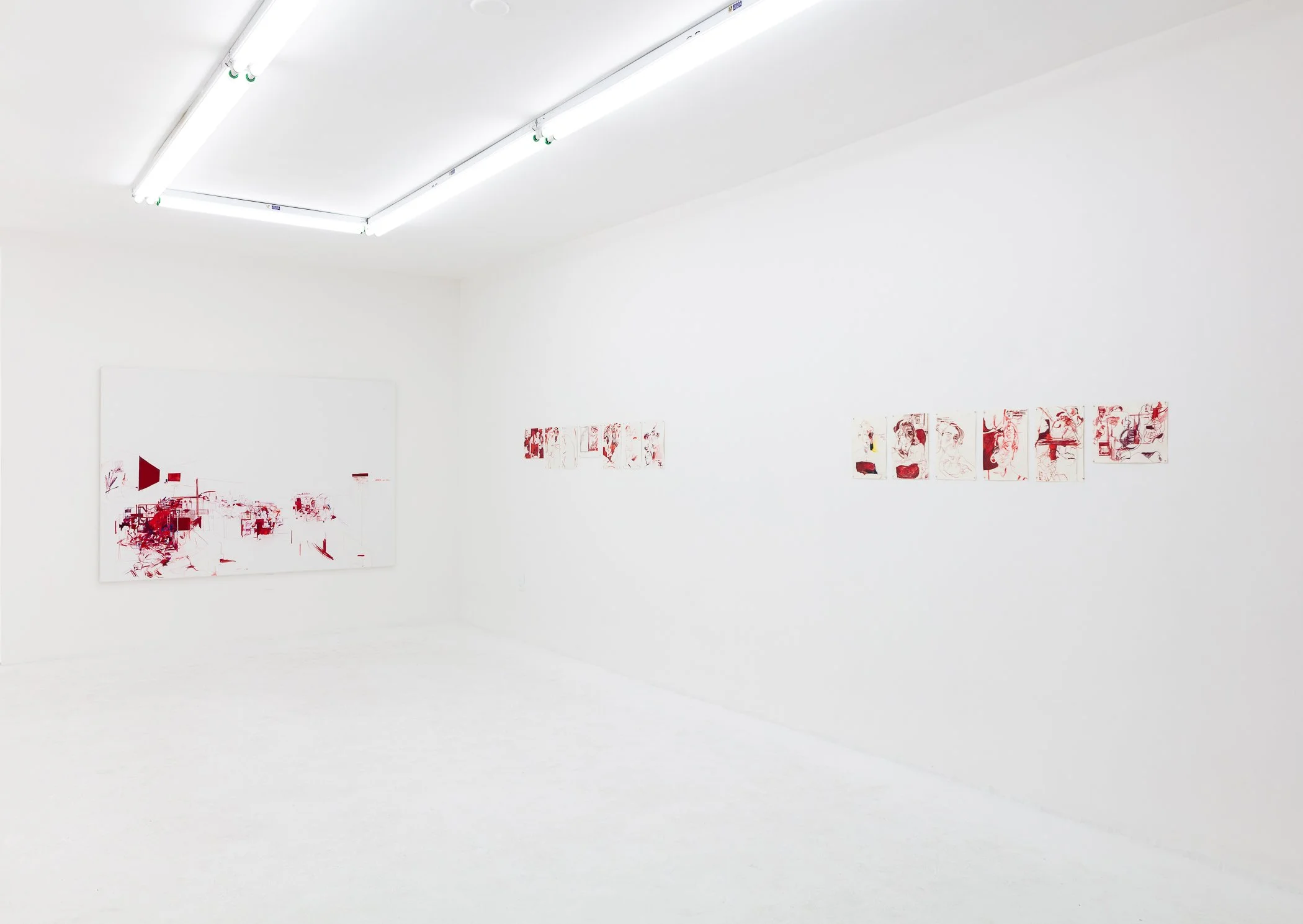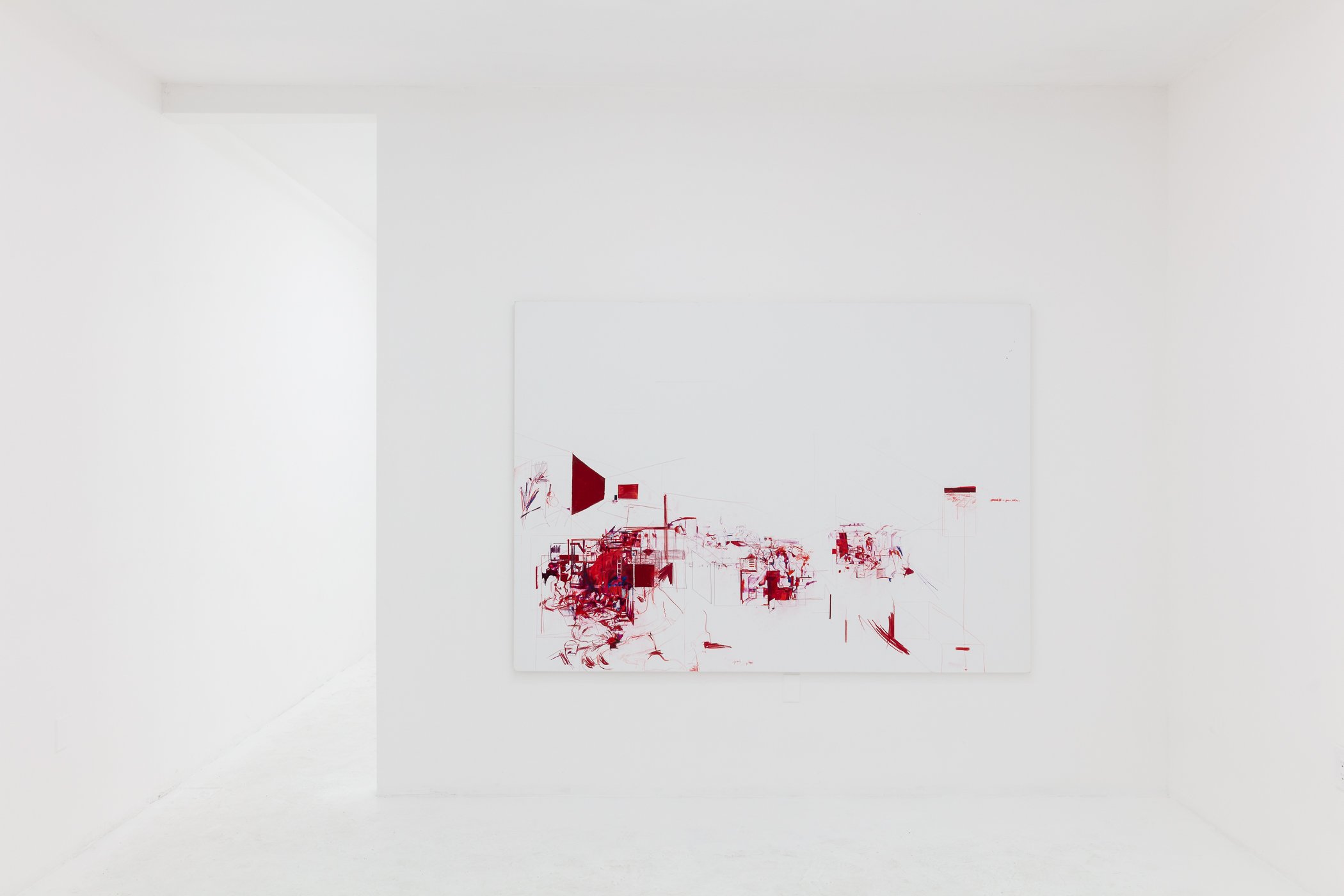
































Your Custom Text Here
JULY 10TH - AUGUST 3RD 2022
OPENING: JULY 10TH, 6-8 PM
Zelmira Rizo-Patrón’s work investigates the environments or ‘bodies’ we inhabit and interact with. Working across drawing, painting and printmaking, she searches to unpack and explore how our relationships to these layered spaces can affect or define our perception, thought and feeling.
Her interest in printmaking lies not in its ability to replicate, but rather in its capacity to create variation and build a layered or moving sense of time and space1. By juxtaposing what she calls ‘variable prints’ (of drawings and paintings) she establishes idiosyncratic relationships within the work that could parallel the constantly evolving life of a thought or feeling, of an experience and its memory, of a dream and its recollection.
This perspective is applied both practically and conceptually in her work: personal and intimate encounters or dialogues (with self and others) are captured through quick impulses of drawing and painting. These are then mapped or layered into the fabric of a larger space, time, or discourse.
Rizo-Patron’s work could be seen as a consideration of the roles that institutions such as language, and other structures play on bodies, suffocating them, censoring them, or conversely, liberating and empowering them. By rendering the very structure of language and the architecture of its power illegible, Zelmira opens spaces of interrogation and play, through a vantage point that approaches the poetic, bypassing the very limits and impositions that decapitate us daily.
Zelmira Rizo-Patrón was born in 1995 in Miami and is of Peruvian descent. She has a BA from Cornell University in comparative literature with a concentration in architecture. This is her first individual presentation.
1. Rizo-Patron’s interest in time as a productive force for meaning, recalls Jorge Luis Borges’ short story, Pierre Menard, Author of the Quixote, in which the fictional character Pierre Menard, writes in the 20th Century, a line for line reproduction of Don Quixote. This short story, published in 1939, presents time as a cumulative force, which charges the contextual meaning of the original work; therefore, producing, as we see in Zelmira’s work, an-other type of body (of work).
JULY 10TH - AUGUST 3RD 2022
OPENING: JULY 10TH, 6-8 PM
Zelmira Rizo-Patrón’s work investigates the environments or ‘bodies’ we inhabit and interact with. Working across drawing, painting and printmaking, she searches to unpack and explore how our relationships to these layered spaces can affect or define our perception, thought and feeling.
Her interest in printmaking lies not in its ability to replicate, but rather in its capacity to create variation and build a layered or moving sense of time and space1. By juxtaposing what she calls ‘variable prints’ (of drawings and paintings) she establishes idiosyncratic relationships within the work that could parallel the constantly evolving life of a thought or feeling, of an experience and its memory, of a dream and its recollection.
This perspective is applied both practically and conceptually in her work: personal and intimate encounters or dialogues (with self and others) are captured through quick impulses of drawing and painting. These are then mapped or layered into the fabric of a larger space, time, or discourse.
Rizo-Patron’s work could be seen as a consideration of the roles that institutions such as language, and other structures play on bodies, suffocating them, censoring them, or conversely, liberating and empowering them. By rendering the very structure of language and the architecture of its power illegible, Zelmira opens spaces of interrogation and play, through a vantage point that approaches the poetic, bypassing the very limits and impositions that decapitate us daily.
Zelmira Rizo-Patrón was born in 1995 in Miami and is of Peruvian descent. She has a BA from Cornell University in comparative literature with a concentration in architecture. This is her first individual presentation.
1. Rizo-Patron’s interest in time as a productive force for meaning, recalls Jorge Luis Borges’ short story, Pierre Menard, Author of the Quixote, in which the fictional character Pierre Menard, writes in the 20th Century, a line for line reproduction of Don Quixote. This short story, published in 1939, presents time as a cumulative force, which charges the contextual meaning of the original work; therefore, producing, as we see in Zelmira’s work, an-other type of body (of work).